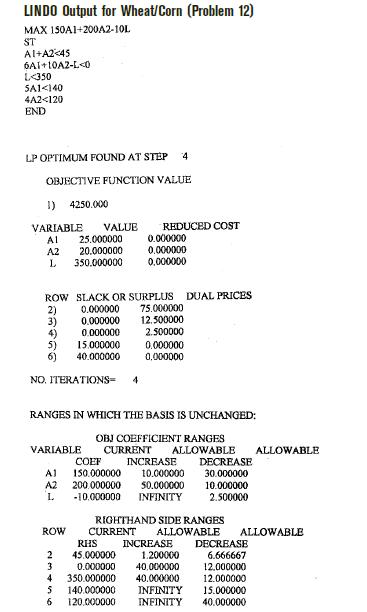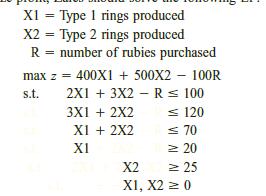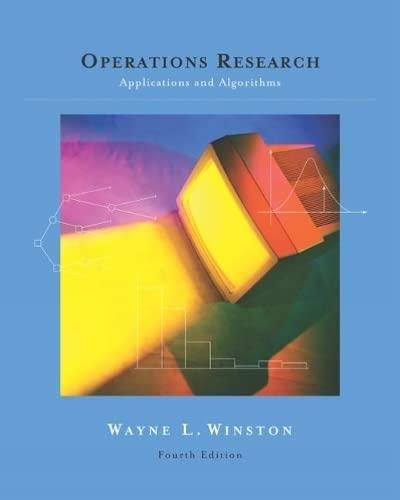16 Zales Jewelers uses rubies and sapphires to produce two types of rings. A Type 1 ring...
Question:
16 Zales Jewelers uses rubies and sapphires to produce two types of rings. A Type 1 ring requires 2 rubies, 3 sapphires, and 1 hour of jeweler’s labor. A Type 2 ring requires 3 rubies, 2 sapphires, and 2 hours of jeweler’s labor.
Each Type 1 ring sells for $400, and each Type 2 ring sells for $500. All rings produced by Zales can be sold. Zales now has 100 rubies, 120 sapphires, and 70 hours of jeweler’s

labor. Extra rubies can be purchased at a cost of $100 per ruby. Market demand requires that the company produce at least 20 Type 1 rings and at least 25 Type 2 rings. To maximize profit, Zales should solve the following LP:

Use the LINDO output in Figure 14 to answer the following questions:
a Suppose that instead of $100, each ruby costs $190.
Would Zales still purchase rubies? What would be the new optimal solution to the problem?

b Suppose that Zales were only required to produce at least 23 Type 2 rings. What would Zales’ profit now be?
c What is the most that Zales would be willing to pay for another hour of jeweler’s labor?
d What is the most that Zales would be willing to pay for another sapphire?
e Zales is considering producing Type 3 rings. Each Type 3 ring can be sold for $550 and requires 4 rubies, 2 sapphires, and 1 hour of jeweler’s labor. Should Zales produce any Type 3 rings?
Step by Step Answer:

Operations Research Applications And Algorithms
ISBN: 9780534380588
4th Edition
Authors: Wayne L. Winston





